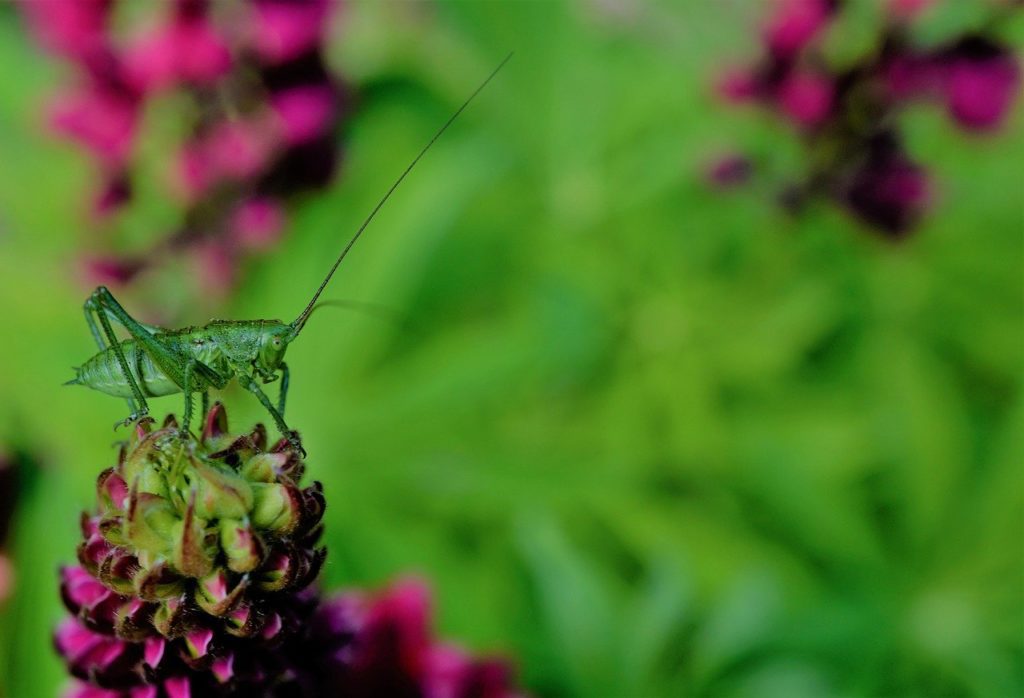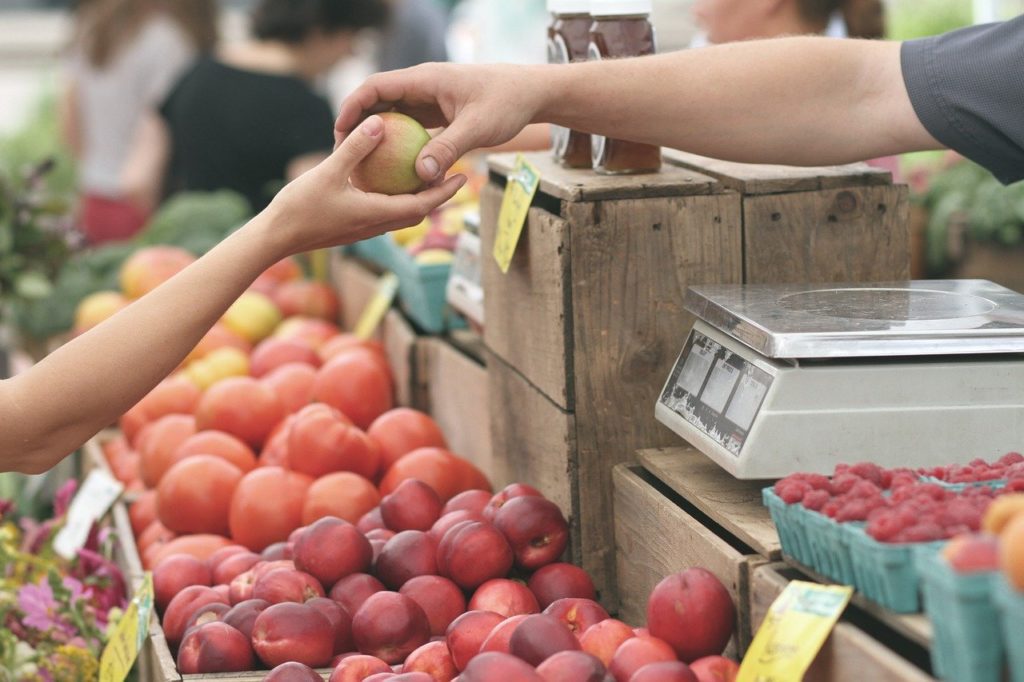Protected Areas are essential for new EU Strategies
In the framework of the EU Green Deal, on the 20th of May, the European Commission proposed two key policy documents for the future of Europe : the Biodiversity Strategy 2030 and the Farm to Fork Strategy.
EUROPARC Federation has closely followed the policy-process, ensuring the voice of Protected Areas within the EU institutions has been heard. The EUROPARC Federation believes our members, are key actors to ensure the full implementation of these strategies.
What are the European Commission’s responses to the current global challenges regarding biodiversity loss and unsustainable food value chain?
As part of the EU Green Deal, the Biodiversity and the Farm to Fork strategies, must be complementary and project themselves towards the same horizon. Indeed, the realisation that our food value chain is not sustainable and that biological diversity is disappearing at a breakneck speed, illustrates the necessity to create a coherent policy framework. It is essential to underline the complementarity of both strategies that came out together on the 20th of May.
Protected Areas are thus key actors, with a more integrated approach to land management, in promoting this new European horizon, being
- Key actors to implement EU policy in the field
&
- Key beneficiaries of EU Policies, Programs and actions.
The Biodiversity Strategy: Bringing back nature into our lives
The Biodiversity Strategy for 2030 recognises the multiple benefits of biodiversity for society and, more broadly, for life on earth. This aspect is reinforced in light of the COVID19 crisis: this pandemic has provided an opportunity to demonstrate the links between ecosystem health and human health. EUROPARC under lined this link, in a letter to the European Union.
Taking into account the 5 main drivers of biodiversity loss described by IPBES, the Biodiversity Strategy bases its approach by addressing these drivers.
Concerning Protected Areas, in particular, the N2000 network, the European Commission observes that the:
protection has been incomplete, restoration has been small-scale, and the implementation and enforcement of legislation has been insufficient. (Biodiversity Strategy, p.4)
Among the objectives of the Biodiversity Strategy, the European Commission wants to “improve and widen our network of Protected Areas and develop an ambitious EU Nature Restoration Plan.” (Biodiversity Strategy, p.4)
For managers of Protected Areas and the Natura 2000 network, these are the key messages of the policy document regarding NATURE PROTECTION :
- Build a coherent Trans-Europe Nature Network.
- Legally protect a minimum of 30% of the EU’s land areas and 30% of the EU sea area and integrate ecological corridors. (It means an extra of 4% of land and 19% for seas areas as compared to today)
- 10% of EU land and 10% of EU sea should be under strictly Protected Areas. (Today, only 3% of land and less than 1% of marine areas are under strict protection.)
- As part of this strict Protected Areas network, it is highlighted the necessity of protect all the EU’s remaining primary and old-growth forests.
Member States will be in charge of designating the new Protected Areas and strictly Protected Areas; they will define conservation objectives and measures for all Protected Areas. Here, EUROPARC Federation and its members should have a key role to play to provide our expertise to our own Member State in order to ensure a participative and representative process.
EUROPARC members have a privileged view on the situation, putting policy into practise and sharing that knowledge with policy-makers.
For instance, for many years, we developed and fostered the Transboundary Programme to build partnership across boundaries. This expertise developed during these initiatives is then crucial for the realisation of the objectives of the Biodiversity Strategy. Effective partnerships and participation is the key to ensure a proper implementation on the field.

For managers of Protected Areas and the Natura 2000 network, these are the key messages of the policy document regarding NATURE RESTORATION:
– Legally binding EU nature restoration targets will be proposed in 2021. It will be subject to an impact assessment.
– Policy coherence with the Common Agricultural Policy and the Farm to Fork Strategy :
- Reduce by 50% the overall use of – and risk from – chemical pesticide by 2030 and reduce by 50% the use of more hazardous pesticide by 2030
- To bring back at least 10% of agricultural areas under high-diversity landscape features (with buffer strip, rotational or non-rotational fallow land, hedge, non-productive trees, terrace wall and ponds.)
- 25% of the EU’s agricultural land must be organic farm by 2030
– An objective to increase the quantity, quality and resilience of the forest of Europe :
- A Forest strategy by 2021 with the objective to plant at least 3 billion additional trees in the EU by 2030.
- Development of the Forest Information System for Europe
– Restoring the good environmental status of marine ecosystem :
- Marine resources must be harvested sustainably and zero-tolerance for illegal practices
- A new action plan to conserve fisheries resources and protect marine ecosystem will be proposed by 2021
- To tackle by-catch of species
- Fisheries-management measures must be established in all marine protected areas
– Restoring Freshwater ecosystems:
- 25 000 km of free-flowing rivers must be restored
– Greening urban and peri-urban areas:
- Cities with at least 20 000 inhabitant will have an ambitious Urban Greening Planning
- EU Urban Greening Platform
– Reduce Pollution & Addressing invasive alien species:
- Reduction of use of fertiliser by at least 20%
- A new EU strategy on Zero pollution Action plan for Air, Water and Soil
- A EU invasive Alien Species Regulation
Overall the Biodiversity Strategy seeks to improve the health of existing and new Protected Areas.
EUROPARC Federation welcomes this step towards recognition of the value of Protected Areas as a key delivery mechanism for the strategy. EUROPARC will continue to strengthen our network to share best-practices to ensure the effectiveness of the Biodiversity and Farm to Fork Strategies.
EUROPARC will contribute to support the work of Protected Areas, to harmonize and improve their management in order to collectively recover and restore the conservation of Nature in Europe.
To ensure the effectiveness of the strategies, the European Commission propose a new European biodiversity governance framework “to help map obligations and commitments and set out a roadmap to guide their implementation”. In addition, the role diplomacy of European Union to become a global leader in nature conservation is a key element of the Biodiversity Strategy 2030.
Farm to Fork : for a fair, healthy and environmentally-friendly food system

As part of the EU Green Deal, the Farm to Fork Strategy seeks to rethink the whole food value chain in order to improve its sustainability at each step : from production to consumption. The Strategy addresses the Green Deal’s vision on several issue :
- ensure sustainable food production, stimulate food processing (seeking industry’s commitment for responsible and transparent business),
- promote sustainable food consumption facilitating the shift toward healthy and sustainable diets,
- reduce food loss and waste,
- combate food fraud, and promote a global transition to sustainable food system (favouring international cooperation, including ambitious sustainable food related provisions in all relevant EU bilateral agreements and build green alliances with non-EU countries).
The Farm to Fork Strategy (F2F) has a general objective with a transversal vision : promoting eco-friendly practices (development of organic farming, animal welfare, reduce dependency on pesticide, shift consumption toward healthy diet…) by seizing the opportunities that offer new technologies and scientific discoveries.
One of the objective of the Farm To Fork Strategy is to “Ensure that the food chain has a neutral or positive environmental impact, preserving and restoring the land, freshwater and sea-based resources on which the food system depends; helping to mitigate climate change and adapting to its impacts; protecting land, soil, water, air, plant and animal health and welfare; and reversing the loss of biodiversity.” (F2F, p.5)
Why the Farm to Fork Strategy is important for Protected Areas?
The EUROPARC Federation, believes that what is good for biodiversity is also good for people. Protected Areas could play a role at the production stage of the food value chain. Indeed, the dichotomic vision between agriculture and biodiversity conservation has to be removed to think about the win-win relationship between these two sectors being absolutely possible.
There are 2 major points regarding Protected Areas and Food Production of the Farm to Fork Strategy :
- the link between agriculture and biodiversity is essential as they have a co-beneficial relationship
Protected areas and Natura2000 are laboratories for experimentation for initiatives stemming from the Farm to Fork strategy because they manage everyday with biodiversity and economic activities inside and nearby its borders. Agriculture and biodiversity are very closely linked and co-beneficial. Protected Areas can contribute to reduce the environmental and climate footprint of EU Food system and strengthen its resilience.
- that agriculture in Protected Areas can be a good indicator of sustainable agriculture and health food production, and also contributes to rural development.
Sustainable agriculture in Protected Areas is a key to achieve the objectives of the Farm to Fork strategy: by providing “fair, healthy and environmentally-friendly” products. It could also dynamize the local food value chain and open new opportunities for employment.
For many years, EUROPARC Federation has advocated for the recognition of the work of Protected Areas in their implementation of EU policies.
Thus, after years of dialogue and cooperation with the European Union, we very much welcome this ambitious Biodiversity Strategy for 2030. We anticipate too, a more constructive relationship between Protected Areas and food production arising from the Farm to Fork Strategy. We celebrate the commitment of EU to tackle the biodiversity crisis. EUROPARC Federation remain ready to collaborate with the European Institutions, offering expertise and experience, to support the implementation of the Strategy and to provide inputs for the development of the dedicated Action Plan.
STAY TUNED ! EUROPARC Federation will publish more articles with a deeper analysis and recommendations on both strategies !